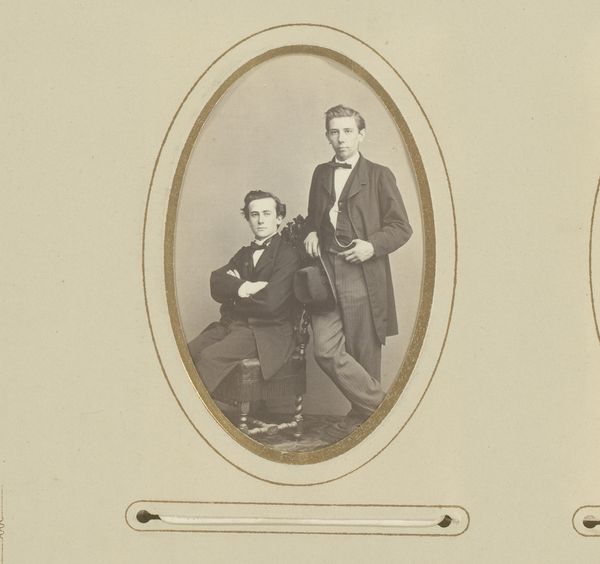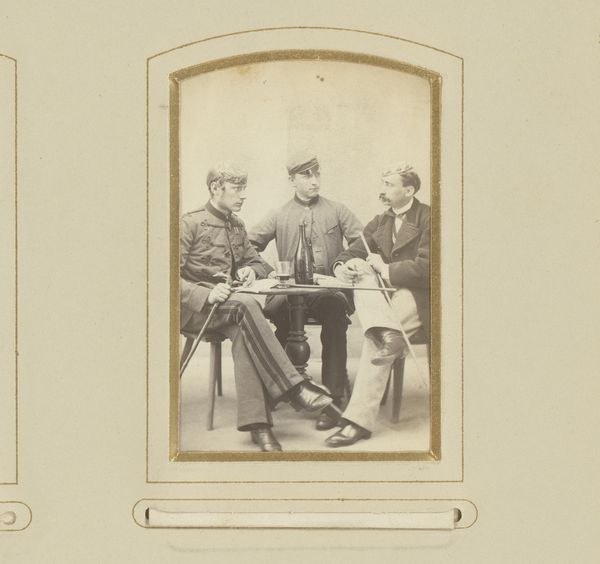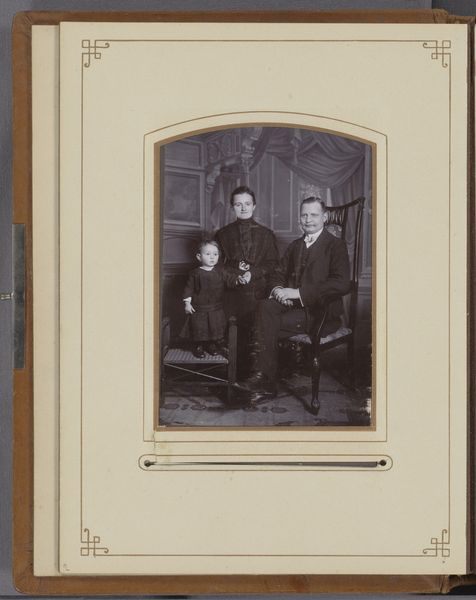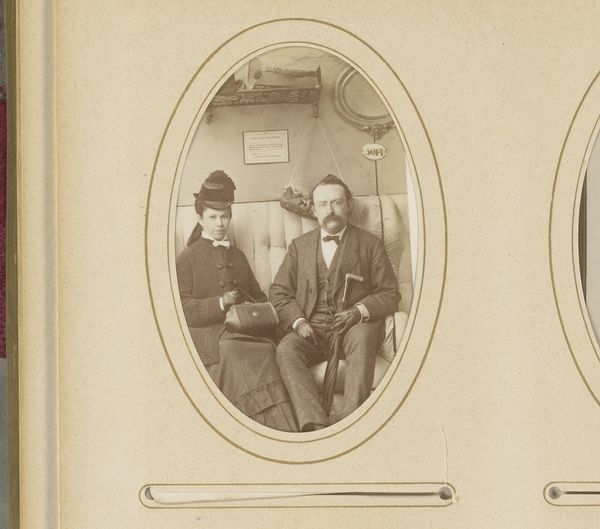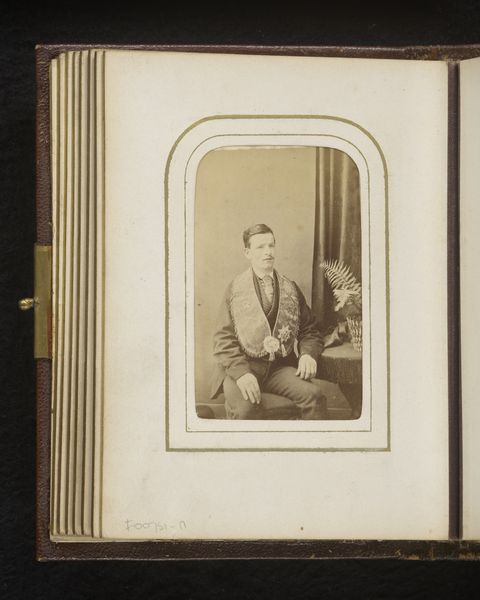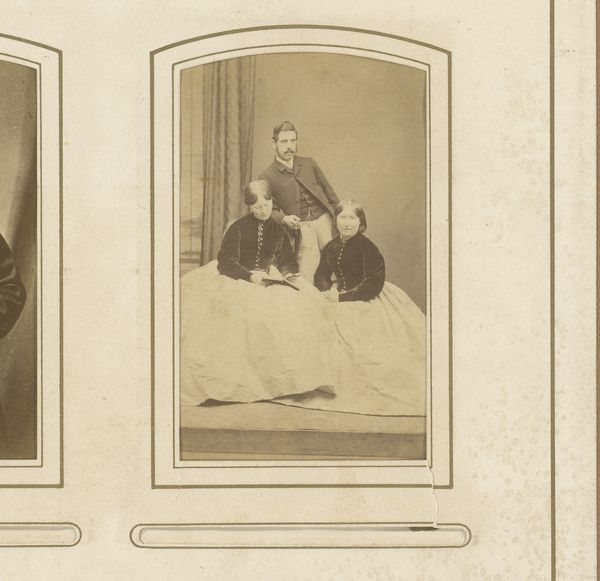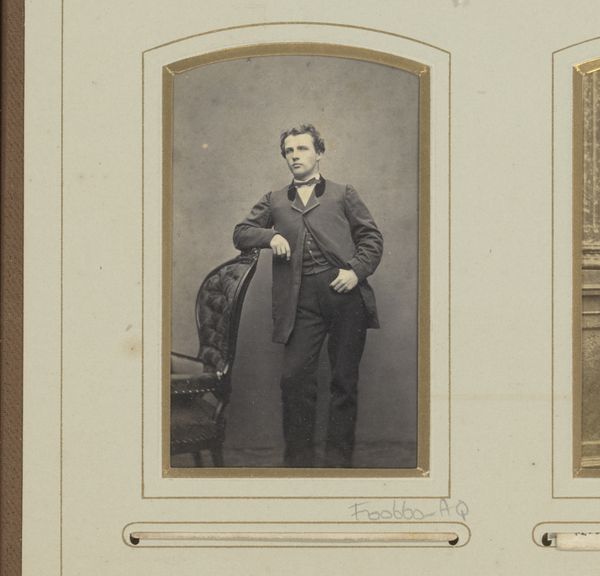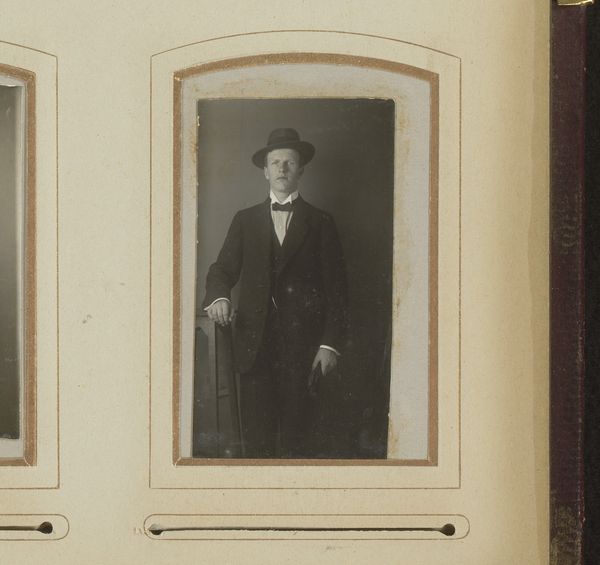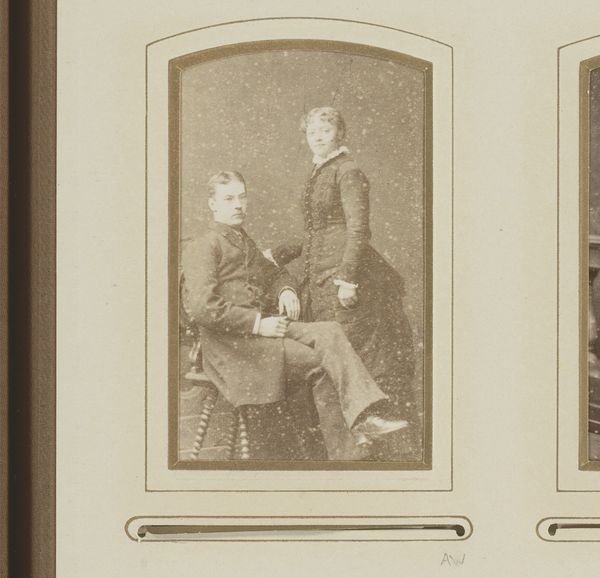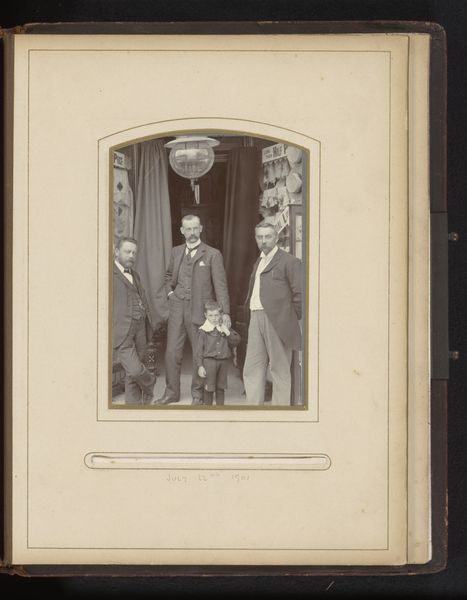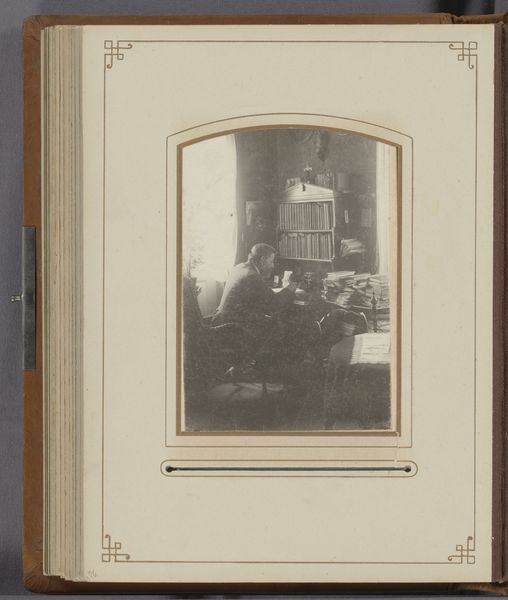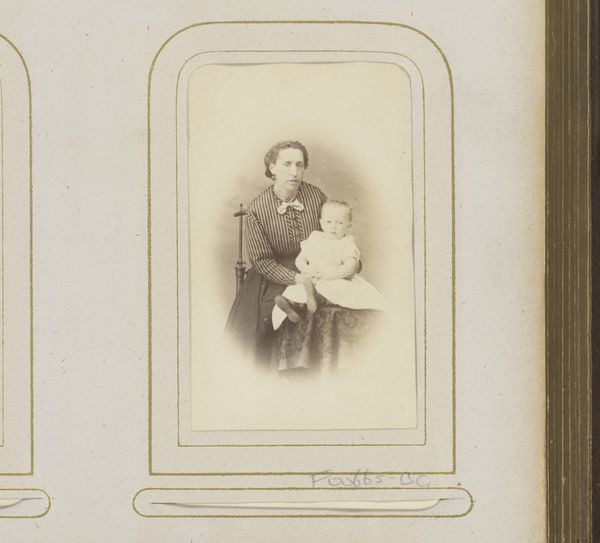
photography, gelatin-silver-print
#
portrait
#
table
#
vintage
#
photography
#
group-portraits
#
gelatin-silver-print
#
genre-painting
#
realism
Dimensions: height 84 mm, width 52 mm
Copyright: Rijks Museum: Open Domain
Curator: Take a moment to observe “Portrait of Three Boys Around a Table,” a gelatin silver print dating back to between 1869 and 1873 by Bernardus Theodorus van Loo. Editor: Well, if this isn’t the picture of repressed Victorian childhood! Just kidding…mostly. But that youngest one looks ready to bolt. I immediately get a sense of…expectation. Heavy with obligation. Curator: Exactly. Group portraits such as this often reflected and reinforced societal norms. The presence of the table, book, and setting all underscore themes related to bourgeois domesticity, literacy, and propriety that defined this era’s aspirational identity. The staging, too, plays its part. Editor: Ah, yes, the staging! So consciously arranged. The composition reminds me of some kind of Dutch Golden Age genre painting, all carefully placed objects. Yet this captures a particular fleeting moment. I'd like to write a poem just about the hat placed carefully on the table. What kind of hat? Is it like the one from Don't Sit Under the Apple Tree? Curator: More likely, its position indicates status. It symbolizes education and potentially hints at the father’s social position. These details were meticulously presented to convey very specific narratives of societal status and success to their viewing audiences. Editor: All I'm getting is a story about boredom. Just a touch of longing. Perhaps some unspoken rivalry between the oldest brothers. Although there is nothing too much here, you sense that it is something important just being unsaid. I find the emotional nuance very strong. Curator: Interesting. Because that interplay of societal expectations and hidden feelings is, I think, a compelling commentary on youth and masculinity within specific nineteenth-century bourgeois norms. Editor: Absolutely. The technical constraints of early photography only enhanced these qualities—the careful posing required patience and demanded certain affectations, further influencing how individuals like the subjects you see here wanted to be seen. Curator: I agree, the controlled expressions reveal as much as they conceal, and help open dialogues about the social construction of identity and its relationship with technological progress. What do we think we see, and what were we *meant* to see? It is endlessly thought provoking. Editor: A quiet moment that speaks volumes still. That quietness has been perfectly captured for an emotional impact that resonates with any century.
Comments
No comments
Be the first to comment and join the conversation on the ultimate creative platform.

